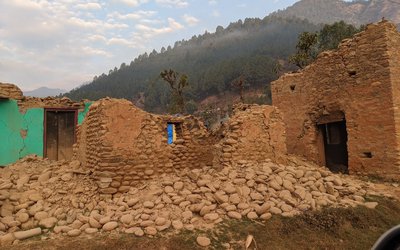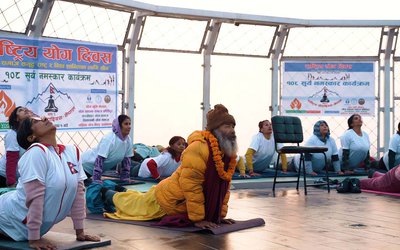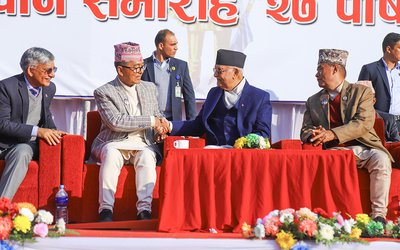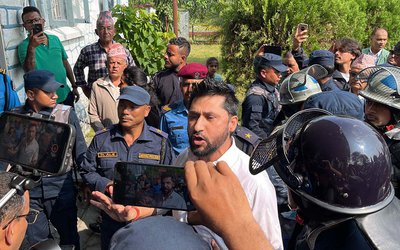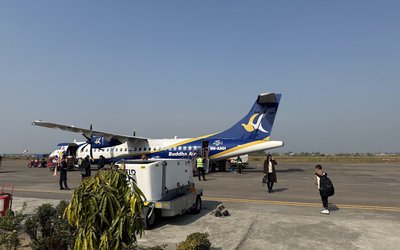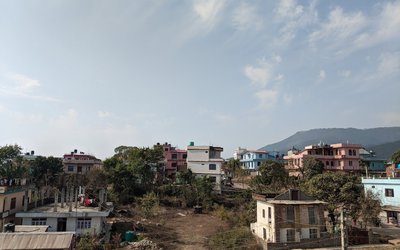
After almost three weeks of hectic research, an international team of scientists led by the Alfred Wegener Institute is now setting out to close the gap of knowledge on the upper level of Monsoon.
An international team of scientists led by the Alfred Wegener Institute is now setting out to close this gap of knowledge. The StratoClim project involves teams from 37 research institutions from 11 European countries, the United States, Bangladesh, India, and Nepal, and marks an important milestone in international research cooperation in the region.
Scientists argue that the formation and properties of the aerosol cloud that sits above the monsoon is a major unknown in climate science, and their potential future changes represent one of the largest uncertainties in climate predictions. Aerosols may either warm or cool the Earth's surface, depend on their composition and how they interact with cloud formation processes. There is a little understanding about how monsoon rainfall will respond to changes in emissions of pollutants or to climate change.
"For the first time we were able to study the composition of the air that reaches the stratosphere above the monsoon and affects their composition globally,” said Project leader Markus Rex from AWI.
After three weeks of research, over one hundred climate scientists, who involved in one of the biggest climate research missions being undertaken by Germany’s Alfred Wegner Institute and Nepal’s NAST, have a sigh of relief as they achieved what they aspired for.
“We all scientists are happy to have a result to know many unknown patterns of Asian monsoon its nature and its dimensions. The collaboration of NAS, DHM, KU and other many Nepalese institutions finally worked,” said scientist Dr. Fred Stroch. “We have collected all different kinds of data related to monsoon. In early days, we do have a lot of suspicions whether we can achieve this. Given the support provided India and Bangladesh, we reach from the Bay of Bengal to the Himalayas learning Asian Monsoon. This is a great achievement,” said professor Rex.
According to scientists during summer, the Asian Monsoon is not only important for Asia but affects weather patterns over the entire northern hemisphere. The Monsoon also acts like an enormous elevator, pumping vast amounts of air and pollutants from the surface up to levels above 16km altitude. According to the scientists, these attitudes are so high that monsoon air then ascends freely into the stratosphere, the stable layer that overlies the lower part of the atmosphere and contains the Earth's protective ozone layer. Once in the stratosphere, monsoon air spreads globally and persists for years. Satellite images show a large cloud of aerosols - small droplets or dust particles - directly above the monsoon and extending from the Arabian Peninsula to the eastern coast of China.
Professor Thomas Peter said this is a historic achievement in his entire career which he has aspired for. “Our team is completely satisfied as we studied the black carbon, participles, CO2 and other such chemicals in the air from over 65000 feet height.
As it was a stratosphere research campaign, which needs a special aircraft flying above sixty thousand feet, they rented a special Russian Aircraft. While the research itself is a long term mission needing more works, the aircraft campaign started in mid-July.
“We are really grateful for all stake holders involved in the project to achieve such a great accomplishment in the area of study of Asian Monsoon,” said Dr.Markus Rx, head of Atmospheric Physic section of Alfred Wegener Institute and professor of atmospheric physics the University of Potsdam. ”We also studied nature of monsoon cyclone.”
The Asian Monsoon System is one of the Earth's largest and most energetic weather systems, and monsoon rainfall is critical to feeding over a billion people in Asia. An international team of scientists led by the Alfred Wegener Institute, Helmholtz Centre for Polar and Marine Research (AWI) is now conducting the first-ever scientific mission to the upper levels of the monsoon system, using a high-altitude research aircraft flying out of Nepal. The results will help to better understand how this important weather system affects global climate and how it may change in the future.
The StratoClim aircraft campaign is a major airborne field measurement campaign to supply for the first time ever data on the coupling of the Asian Summer Monsoon with the global and local climate system.
The campaign is cooperation between the European StratoClim consortium led by the German Alfred Wegener Institute (AWI) and the Nepal Academy of Science and Technology (NAST), Kathmandu University and Department of Meteorology and Hydrology.
“We are very grateful for the support given by Buddha Air providing its hanger and Civil Aviation Authority and Air Traffic Controllers to fly over Nepal,” said professor Rex. “Finally, Embassy of Germany has played very important role.”
The air researched within the project is affected by extremely interesting and complex chemical processes taking place inside clouds. So far no one has ever been able to characterize this air or carry out a scientific research mission above the monsoon.
The StratoClim project was, for the first time ever, to investigate these chemical processes that transport and produce aerosols in the UTS. It is hypothesized that these tiny aerosol particles play a major role in the condensation processes resulting in the formation of the monsoon clouds and affecting the dynamics of the monsoon.
With strong local cooperation has been established with the International Centre for Integrated Mountain Development (ICIMOD) in Kathmandu, with the Indian Institute of Tropical Meteorology (IITM) and with the University of Dhaka, Bangladesh, the project makes highly successful.
“The aircraft field campaign is one major activity within the larger StratoClim project, which is funded by the European Union 7th Research Framework Program. The Aircraft field campaign runs from 20 July to 12 August 2017,” said Professor Markus Rex. StratoClim Coordinator.
"To understand how the monsoon will respond to human emissions of pollutants and to climate change is obviously of crucial importance for the countries directly affected by it. But it matters to all of us as well. Because the monsoon drives weather patterns around the world and affects the stratosphere globally, this research will also improve our understanding of climate processes worldwide and will improve climate predictions where we live."

Keshab Poudel
Poudel is the editor of New Spotlight Magazine.
- The Question Arises: Do Former Prime Ministers Prachanda, Nepal, And Dr. Bhattarai Support The Terror actions Of Hamas?
- Dec 11, 2024
- MD KUL MAN GHISING: December 25 Deadline For Upper Tamakoshi
- Dec 09, 2024
- ADB's REFP Reintegration of Returnee Migrants
- Dec 02, 2024
- The Relationship Between Kosovo And Nepal Is Robust: ELBERT KRASNIQUI
- Nov 29, 2024
- ADB’s REFP: Women (Em)Power
- Nov 28, 2024
